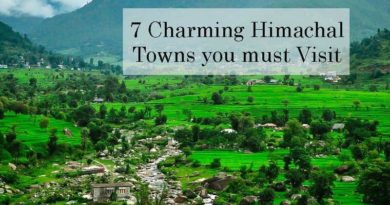The Exotic Birds of Mishmi Hills
The Exotic Birds of Mishmi Hills!
The Mishmi Hills of Arunachal Pradesh, India is known for its mesmerizing beauty and earthy appeal. It is here that the floodplains of the Brahmaputra and the ice-capped mountains of Himalayas meet and flow in harmony. Besides being the land of the most colorful flora and fauna, it is also the home of the most exotic birds out there. According to various data sources, there are about 680 species of birds found in Mishmi Hills. So, let us look at some of the most popular bird species found there!
Sclater’s monal
Sclater’s monal is a bird species from the Phasianidae family. Its scientific name is Lophophorus sclateri. The male and the female birds vary to a large extent in their looks. The male Scalter’s monal is extremely colorful, with its upperparts being a combination of purplish green and blue, the neck being copper, and facial skin being blue. The lower back of the bird is white with a chestnut band towards the end. In contrast, the female bird is mostly dark brown in colour with the throat and the tip of its tail being white. They are mostly found in mountain forests. Sclater’s monal’s food includes flower-heads, leaves, tubers and Polygonum seeds.

Chestnut-breasted partridge
The chestnut-breasted partridge belongs to the Phasianidae family. Its binomial name is Arborophila mandellii. It is known as chestnut-breasted partridge because of its chestnut breast-band, with the colour of its belly being grey. It is classified as a vulnerable species, with the total population estimated to be even less than 10,000. Hunting and forest degradation are the biggest threats to its existence.
Rufous-necked hornbill
The Rufous-necked hornbill is from the Bucerotidae hornbill family. Its binomial name is Aceros nipalensis. Like many of the other species, the male and female birds do not look the same. While the male is largely coloured rufous, the female is almost completely black. Both have a curved bill facing downward, which makes them immediately recognizable as hornbills. At 117 cm, there are quite large, in fact, counted as one of the largest among Bucerotine hornbills. They are mostly known to eat pears, nutmegs, crabs, earthworms, and birds. Over the years, there has been a sharp decline in their population because of hunting and loss of habitat.
Pale-capped pigeon
The pale-capped pigeon belongs to the family of Columbidae. Its binomial name is Columba punicea. The name ‘pale-capped’ comes from the pale grey head of the male birds. The male ones are comparatively brighter than the females, with their upper body being mostly maroon, the lower part being largely black and underbody being brown. The females are a lot duller and are largely brown in colour. Their primary diet comprises of fruits. However, they are also known to eat grains, seeds and grit. The birds breed during May and June and usually, one or at the most, two eggs are laid. The eggs are incubated by both the male and the female birds.
Ward’s Trogon
The Ward’s trogon comes from the family of Trogonidae. Its binomial name is Harpactes wardi. It is found in temperate and subtropical forests. In the case of the male birds, the head, as well as the breast and upper part of the body, are a combination of pink and red. With the female ones, the red gets replaced with yellow. However, both have blue rings around their eyes. Their diet consists of moths, bugs and other insects as well as berries and seeds. Over the years, their population has been on a decline, mainly because of habitat loss.
Dark-sided thrush
The dark-sided thrush is a bird species from the Turdidae family. Its binomial name is Zoothera marginata. Some of the other names of the bird are lesser brown thrush and dark-sided ground-thrush. It has a long bill which is black in colour and its body is mostly brown, though it has white stripes on its face. It is found in damp areas as well as in forests where there is an abundance of bamboo and reed.
Green cochoa
The green cochoa belongs to the family of Turdidae. Its binomial name is Cochoa Viridis. The body of the male bird is moss green, with its crown and wings being blue in colour. The female bird is usually greener than the male one. They are found in tropical moist lowland forests and tropical moist montane forests. Their food consists of berries and insects. Their peak breeding time is summer and they have their nests close to the water. Both the parents incubate the eggs by taking turns.
Check more: Arunachal Pradesh, Birding tour, exotic birds, Mishmi hills


